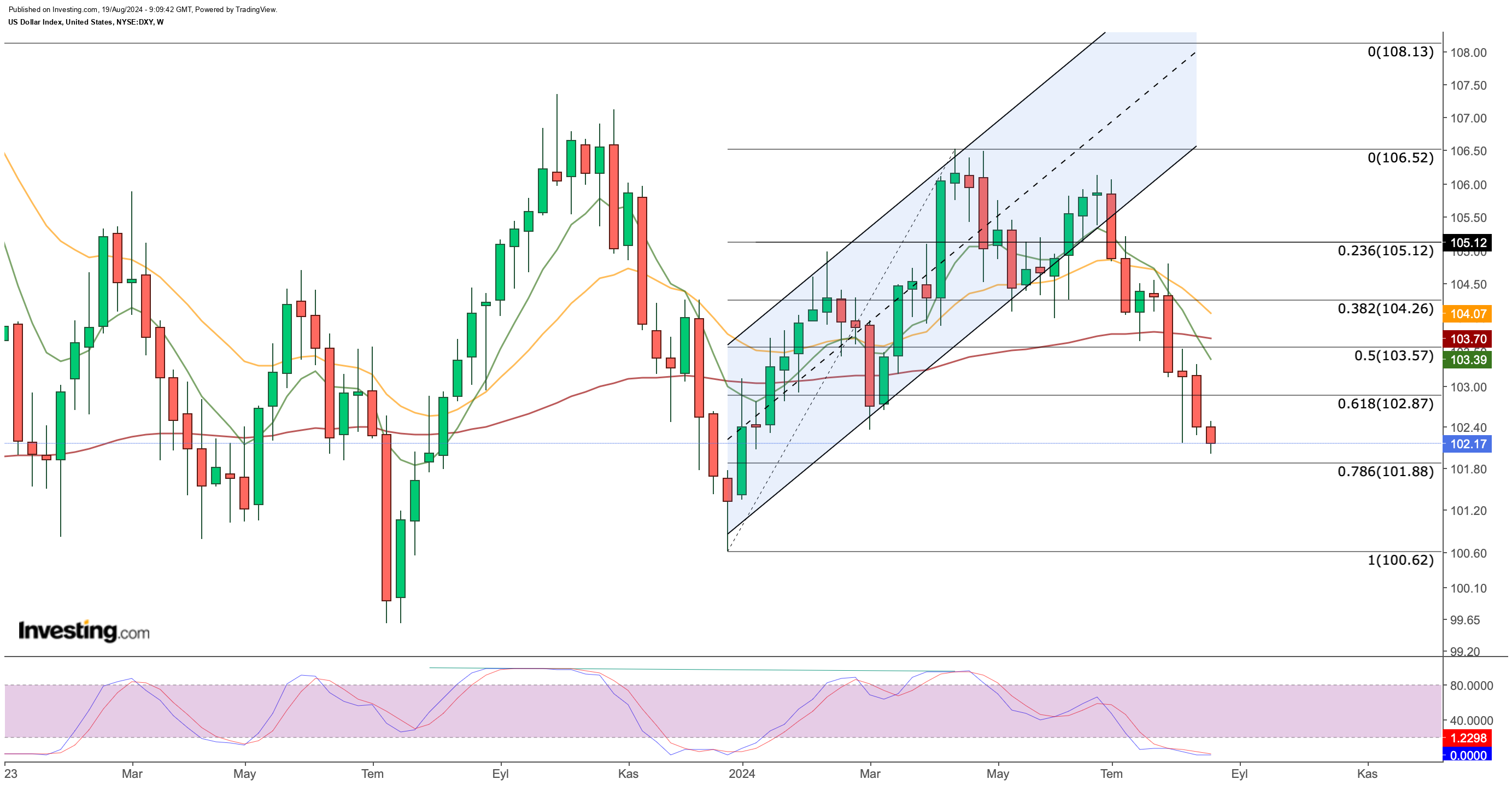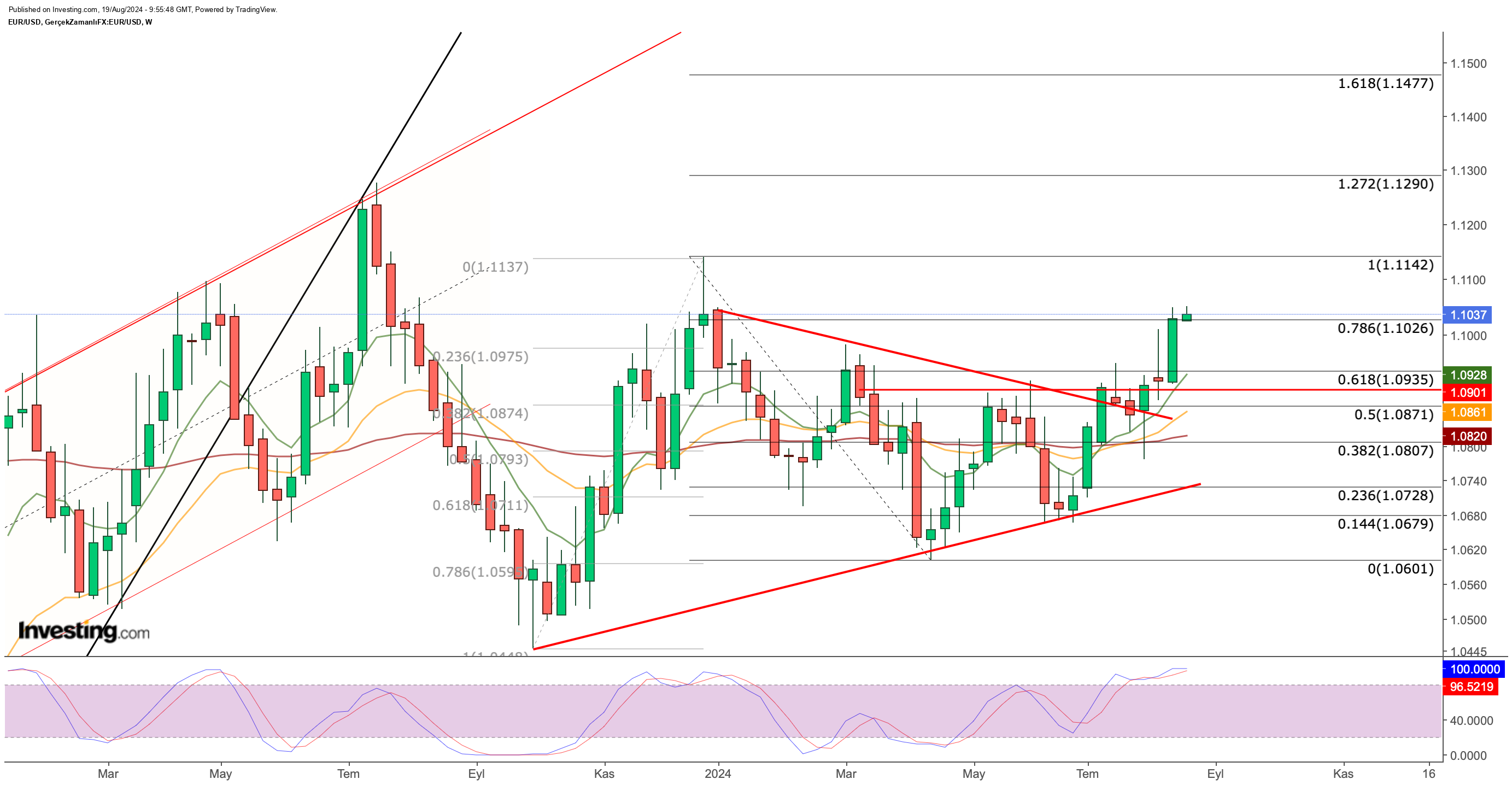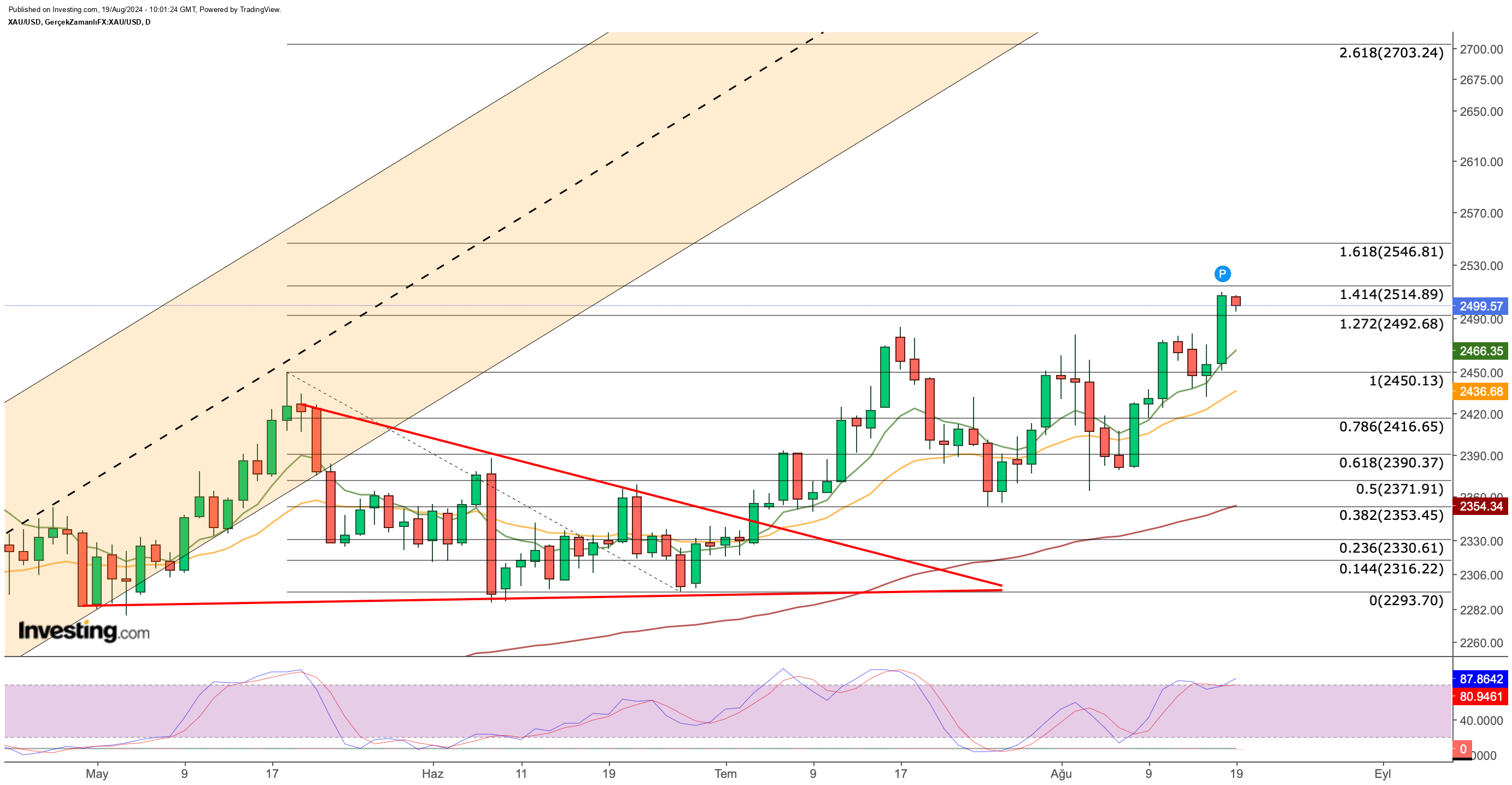- Markets stabilized with positive data easing US recession fears, but the US dollar's decline continued.
- The DXY may face further declines if it falls below the 101.8 support level, with a potential drop past 100 in the cards.
- Gold hit historic highs, supported by dollar weakness, with key support at $2,490 and targets at $2,514 and $2,550.
After a week of volatile trading, global markets stabilized last week as they turned their attention to macroeconomic data. Positive economic indicators alleviated concerns about a US recession, although they did not halt the US dollar's downtrend.
With the US Federal Reserve expected to cut interest rates soon, signs of decreasing demand for the greenback continued to mount, particularly with the EUR/USD rising to around the key 1.10 level.
Macroeconomic Data to Keep Driving Prices This Week
Last week, the Consumer Price Index (CPI) fell below 3%, marking the lowest level in three years. Meanwhile, retail sales exceeded expectations, easing recession fears. Additionally, jobless claims came in lower than anticipated, reducing concerns about the labor market.
Initially, strong data seemed to conflict with the expectation of an interest rate cut, but the market’s reaction has shifted.
Now, rapid cooling of the US economy raises concerns, leading to a period where good data positively influences risky markets. This shift underlines support for the Federal Reserve's rate cut process. Additionally, concerns about a potential recession in the US could become a global issue.
Market participants will likely support data suggesting a soft landing for the US economy—moderate growth coupled with declining inflation. Meanwhile, Fed officials have repeatedly stated the need for more data before deciding on rate cuts.
This week, the market will closely follow Jerome Powell’s speech at the Jackson Hole Symposium for a better understanding of how the rate cut cycle will play out. Any word from Powell could influence global assets big time this week.
With that in mind, let's take a look at the key levels to watch for those looking to trade the greenback.
US Dollar Index: Downward Momentum Likely to Continue Amid Rate Cut Expectations
Given these developments, the greenback reversed its downward trend last month as expectations of an impending Fed rate cut increased. Although the DXY has returned to its early-year level, technical signals suggest that the downward momentum may persist.

The DXY began the week with a decline, dropped to the 102 level. According to the 2025 uptrend, the 101.8 region—corresponding to Fib 0.786 for the dollar index—appears to be the nearest support level. If it falls below this support, the likelihood of a decline past the 100 level will increase.
Short- and medium-term EMA values have intensified the negative momentum, reinforcing the index's decline. A loss of support at 101.8 would cause short-term EMA values to drop below the medium-term EMA, signaling additional bearish pressure.
While the probability of data supporting the dollar in the current market environment is low, a technical confirmation would come with the formation of a floor above 101.8. On the upside, the DXY could attempt to break through resistance levels at 102.87 and 103.50, although this would depend on external risk factors beyond the US.
A potential scenario where the US dollar gains a safe-haven status might arise if positive economic data supports the dollar, especially in the context of increased risks in other developed countries. Key factors could include faster rate cuts in the euro area, slower tightening in Japan, and heightened geopolitical risks.
Currently, the market appears to be shifting towards other major currencies and risky assets, anticipating lower yields for the dollar. This shift contributes to the ongoing low demand for the greenback.
Euro Recovers 2024 Losses Against the Dollar

The weak demand for the US dollar since the beginning of last month has driven the EUR/USD pair upward. After finding support around the 1.06 level in June, the pair surged to the 1.10 region last week, recouping its losses for 2024.
The European Central Bank's earlier interest rate cuts compared to the Federal Reserve initially led to a decline in the euro's value against the dollar in June. However, growing expectations that the Fed would soon begin its own rate cuts helped reverse the trend. Additionally, ongoing recession concerns, though somewhat diminished, continue to support the EUR/USD uptrend.
Last month, EUR/USD faced resistance at 1.09 during its uptrend but established a new floor as August began. The downtrend that persisted until June has now seen the Fib 0.618 level at 1.09 act as support. This week, EUR/USD aims to remain above the Fib 0.786 level at 1.102.
Should the upward trend persist, short-term target levels are 1.1142 and 1.129. Conversely, a weekly close below 1.10 could prompt a retest of support around 1.0935. The messages from this week’s Jackson Hole meeting are expected to significantly influence the pair's movement.
Gold Also Continues to Find Support From US Dollar Weakness

With the certainty of a Fed interest rate cut and ongoing recession rumors in the context of persistent geopolitical risks, gold has reached historic highs.
The economic outlook for the rest of the year appears likely to continue supporting gold. After finding support around the $2,200 level in June, gold has shown signs of a parabolic rise. Last week, the precious metal surged significantly from the $2,450 resistance zone, demonstrating a strong upward trend by closing the week above $2,490 (Fib 1.272).
For this week, $2,490 may act as support for gold. If gold remains above this level on a daily basis, it could advance toward $2,514 and then $2,550. Should gold establish a floor above these resistance levels, the medium-term target could shift towards the $2,700 range.
***
This summer, get exclusive discounts on our subscriptions, including annual plans for less than $8 a month.
Try InvestingPro today and take your investing game to the next level.
Disclaimer: This article is written for informational purposes only. It is not intended to encourage the purchase of assets in any way, nor does it constitute a solicitation, offer, recommendation or suggestion to invest. I would like to remind you that all assets are evaluated from multiple perspectives and are highly risky, so any investment decision and the associated risk is at the investor's own risk. We also do not provide any investment advisory services. We will never contact you to offer investment or advisory services.

